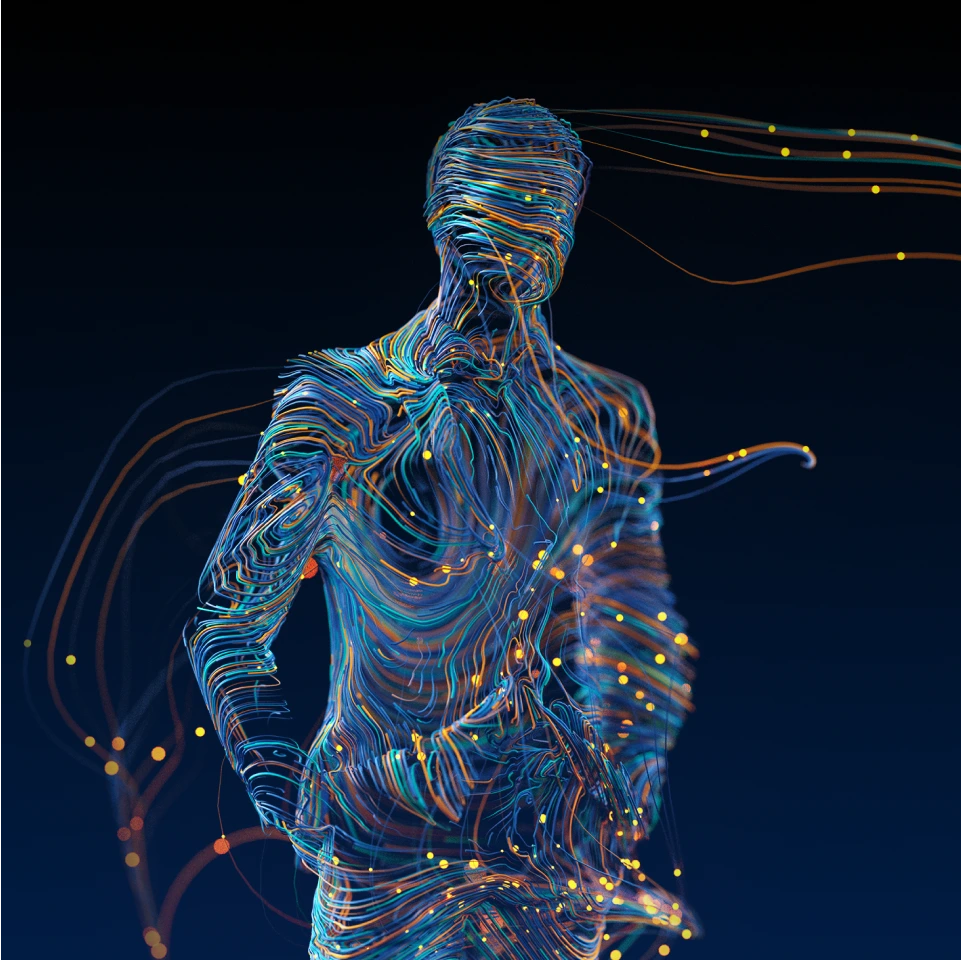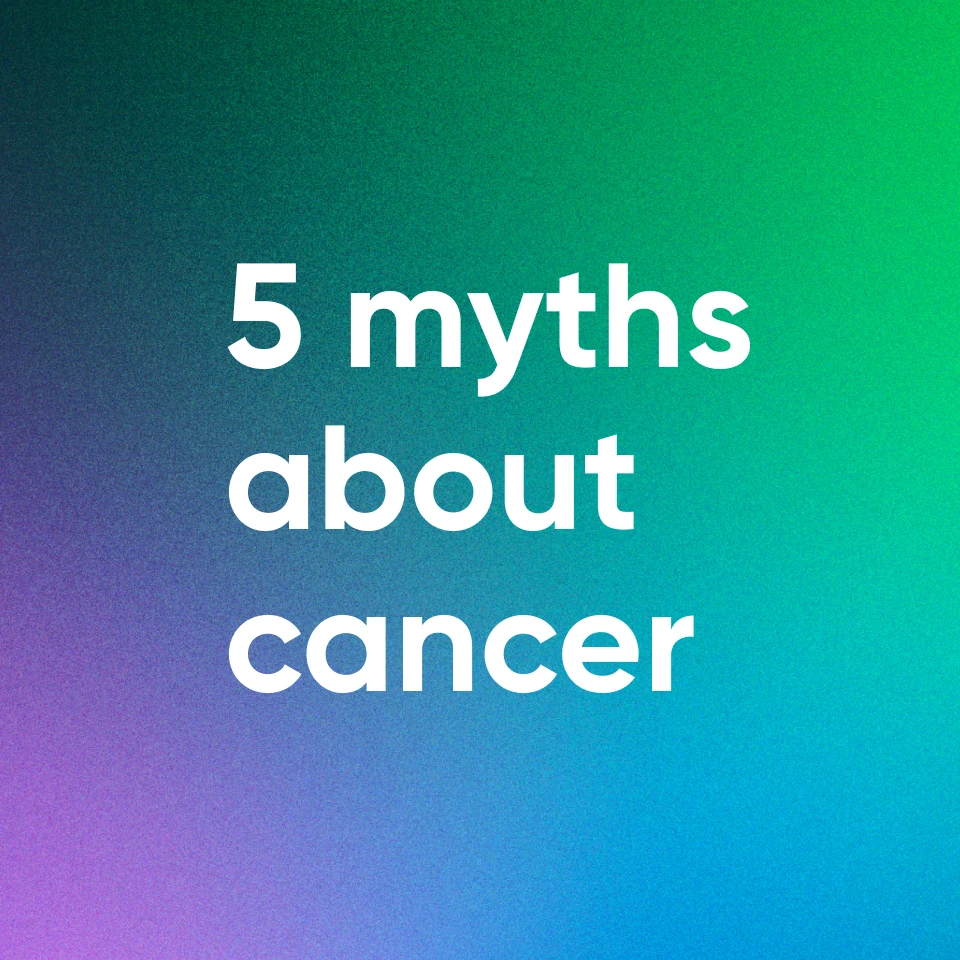You might have gone to the doctor for an annual physical last year and had all your bloodwork come back normal. Or maybe you got a Prenuvo whole body scan the year before and walked away feeling good that all your major bodily systems appeared to be working as they should.
When we feel healthy—and especially when a doctor or test validates it—it’s easy to think, “I’m fine. I’m healthy.” That mindset can keep us from checking in again. We might blow off this year’s physical or postpone a screening, telling ourselves, “My last colonoscopy was clear,” or “I already did that scan.”
But it’s important to remember that these tests and exams are a snapshot of our health at that moment — they're not permanent. And guess what? You are not the same person today that you were a year ago when you got those results.
Recommended: How often you should get a whole body MRI
The body is constantly evolving, and it’s usually very subtle
When it comes to our bodies, things are constantly changing —even when we can’t feel it. For instance, as the years go by, our hormones shift, which can lead to differences in our metabolism. Our brains can change in response to things like lack of sleep, chronic stress, and
age-related cognitive decline. The general wear and tear of life can lead to gradual degeneration in areas like our knees, hips, and spine. And the couple of pounds that you put on in the last six months? They may have deposited as visceral fat behind the abdominal wall, which can’t be seen with the naked eye but can be linked to long-term health risks. These shifts can build up year over year and may start to cause problems over time.
In fact, some studies show that our bodies replace billions of cells per day, especially in areas like our gut lining and within our bloodstream.
How your body can change in just one year
Here’s a look at some of the ways in which the major systems in our bodies change that can lead to us being in a different state of health than we were the year prior.
1. Metabolism changes can occur
Our metabolic rate remains relatively stable in our 20s to 50s but by our 60s, it begins to decline, which can alter your weight distribution. These subtle changes in how your body stores fat—especially visceral fat, which can build up behind the abdominal wall and wrap around your organs—can quietly raise your risk for conditions such as insulin resistance, metabolic syndrome, and cardiovascular disease. These shifts often go unnoticed until they’re picked up on imaging or blood panels.
2. Your body composition may shift
You may still weigh the same that you did last year, but your body may be holding onto this weight in different ways. For instance, you may have lost muscle mass but gained visceral fat. This is because a person’s muscle mass tends to peak around age 30 to 35 and then begins to decline slowly as the years go by. By age 65 for women and 70 for men, this starts to really accelerate.
These changes can alter your body’s internal balance and can impact your metabolism, strength and put you at increased risk for long-term diseases. These subtle changes to your body composition are not always captured by looking in the mirror. They can also be missed when calculating your BMI—which looks at your weight and height but can’t give you a picture of what your body looks like from the inside—i.e. How much muscle do you have? Do you have any muscle imbalances? Where is your fat settling in your body?
Recommended: Why tracking your BMI is becoming irrelevant
3. Your cardiovascular system works a little harder each year
Even in healthy individuals, blood vessels and arteries begin to stiffen with age, causing your heart to have to work harder to pump blood throughout your body. Your blood pressure may rise and cholesterol levels can shift. One year of these changes might not come with immediate symptoms but they can accelerate shifts in your vascular system that can increase the risk for cardiovascular disease, aneurysms, and strokes over time.
4. Your brain response shifts from stress, lack of sleep, and aging
As we age, some degree of age-related brain mass change is common. For many of us, this can begin as early as our 30s and 40s when brain volume begins to shrink. This increases even more at age 60 and beyond. The shape of the brain’s structure can also change, with regions responsible for cognitive function declining as well. These changes often begin subtly in mid-to-late adulthood, though they may not lead to symptoms until much later.
Recommended: 6 powerful exercises to help sharpen your brain
5. Stress and poor sleep can take a toll on your health
A year of chronic stress or sleepless nights, which aren’t always easy to avoid—especially if you find yourself glued to the news these days—can take its toll on the brain. Over time, these factors have been linked to shrinking the brain’s memory center and accelerated age-related brain changes.
Stress can also wreak havoc on our body by increasing inflammation, which can strain your heart, lead to lingering aches, pains and migraines, increase dangerous belly fat, hinder your reproductive function, reduce your immune system, and impact your digestion. Sleep deprivation is linked to many chronic conditions, increasing the risk of stroke, obesity, depression, heart disease, kidney disease, and diabetes.
Related: How stress affects your entire body
6. Your joints and spine can degenerate
Joint degeneration, such as osteoarthritis, typically occurs in adults in their 40s and 50s but can occur in younger people who have had repetitive motion, poor posture, or sports injuries. Weight gain, osteoporosis, drinking alcohol, and smoking can also put you at a greater risk.
Did you have a year where you were working late at night hunched over your laptop on the couch? Maybe you got a new job that required a lot of heavy lifting. Or you sustained an injury on the basketball court on the weekend. These tiny incidents could lead to some changes in the body over time, such as disc compression, knee or hip degeneration.
Related: Do you sit most of your day? You probably have spinal degeneration.
7. A year of dietary changes can impact your liver
Even a year of drinking more than usual can increase your risk of developing fatty liver disease, a condition that occurs when excessive fat builds up inside the liver. In fact, some studies have suggested that during the pandemic, when people had more sedentary indoor lifestyles and may have had more cocktails than usual to cope, may have contributed to an increase in liver conditions.
What you eat over the course of a year can have a big impact as well. For instance, a diet high in saturated fats, trans fats, animal proteins like red and processed meats, and simple sugars can increase your risk of non-alcoholic fatty liver disease. This condition affects 40% of people in the Americas. It’s often referred to as a silent disease that doesn’t show symptoms until more dangerous later stages.
8. A year of being sedentary can reshape your health
Even if you've been active in the past, a single year of significantly reduced movement can have an impact on your health—and not just in obvious ways like weight gain. Too much sitting, which has often been referred to as “the new smoking,” can lead to subtle shifts in your body that can put you on an increased road to hip and back pain, anxiety and depression, heart disease, visceral fat around your organs, diabetes, blood clots, muscle stiffness, and more. One study found that sitting for eight hours a day without exercise carries the same risk of early death as smoking or being obese.
9. Each year brings an elevated risk of cancer
Cancer can affect people of all ages and backgrounds. And while the risk of developing certain cancers in younger people is on the rise (including cancers like colorectal, breast, uterine, kidney cancer in those under 50), advancing age is considered to be one of the most important risk factors for developing cancer. As you get older, the cells in your body accumulate more DNA damage and experience a weakened ability to repair themselves, your immune system works less effectively, and you experience more cumulative exposure to environmental factors like environmental radiation and toxins.
It’s one thing to know your body is changing. It’s another to see it.
Prenuvo can help you visualize—and track—your body’s changes over time through detailed imaging. A whole body MRI offers a deep, non-invasive look at what’s happening beneath the surface, giving you a more comprehensive understanding of your current health. Unlike routine checkups that focus on surface-level stats like weight, cholesterol, and blood pressure, Prenuvo’s advanced imaging can help capture approximately 1.3 billion data points and screens for hundreds of conditions, all in under an hour.
It can help you identify certain abnormalities that may appear in your body from year to year, including:
- Disc degeneration, signs of osteoarthritis, and bone loss, which can silently worsen over time
- Brain structural and volume changes, potentially influenced by stress, sleep deprivation and aging
- Changes in muscle mass, body composition and visceral fat accumulation, which you may not be able to see by stepping onto a scale
- Organ volume and function shifts, which may include, in some instances, early signs of kidney disease or fatty liver
- Signs of chronic inflammation, which may, in some instances, impact multiple systems before symptoms arise
Want to go deeper? Enhanced Screening can provide you with more health information, offering a detailed look at body composition, brain health, and key blood biomarkers tied to metabolism, hormones, inflammation, immune function, and more.
You can’t stop change—but you can stay ahead of it
Many of us go through our lives without thinking twice about our health—until a problem arises. But potentially identifying abnormalities before symptoms appear may give you the chance to take action. Small lifestyle tweaks, such as prioritizing more sleep, shifting your exercise program, and altering your diet, can make a big impact when you’re informed early.
Whether you’re adjusting your lifestyle, monitoring a known issue, or staying proactive as you age, Prenuvo provides you with a more comprehensive understanding of your health.
Because you may not be the same person you were last year. And that’s a good reason to check in with your body.
To learn more about the benefits of whole body MRI and/or Enhanced Screening, book a call with a member of our team.





.webp)


